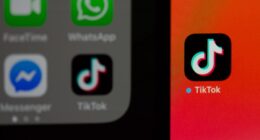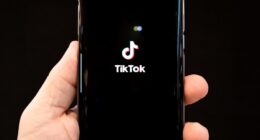In the ever-evolving landscape of music and entertainment, understanding the target audience is paramount for artists and producers alike. The audience is not merely a passive group of listeners; they are active participants in the music experience, shaping trends and influencing the direction of the industry. To effectively connect with this audience, it is essential to delve into their demographics, preferences, and behaviors.
This involves analyzing age groups, geographic locations, cultural backgrounds, and even lifestyle choices. For instance, a young audience may gravitate towards genres that reflect their experiences and aspirations, while older listeners might seek nostalgia or deeper lyrical content. By segmenting the audience into distinct categories, artists can tailor their music and marketing strategies to resonate more profoundly with each group.
Moreover, understanding the target audience extends beyond mere demographics; it encompasses an emotional connection that can be cultivated through storytelling and authenticity. Artists who share personal narratives or address social issues often find a more engaged fan base. This emotional resonance can be further amplified by engaging with fans through social media platforms, where they can share their thoughts and experiences related to the music.
By fostering a community around their work, artists can create a loyal following that not only consumes their music but also advocates for it. This two-way interaction allows for a deeper understanding of what the audience values, enabling artists to evolve their sound and message in ways that keep them relevant and relatable.
Leveraging Social Media and Digital Platforms
Expanding Reach in the Digital Age
In today’s digital age, social media and online platforms have become essential tools for artists seeking to expand their reach and connect with fans. These platforms offer unprecedented opportunities for direct engagement, allowing musicians to share their work, thoughts, and lives in real-time. By leveraging platforms such as Instagram, TikTok, Twitter, and Facebook, artists can create a multifaceted online presence that showcases their personality and artistry.
Unlocking New Opportunities for Engagement
For instance, short video clips on TikTok can go viral, introducing new audiences to an artist’s music in a way that traditional marketing methods cannot achieve. This immediacy not only fosters a sense of intimacy between the artist and their fans but also encourages user-generated content, where fans create their own interpretations or remixes of songs, further amplifying the artist’s reach. Additionally, digital platforms provide valuable insights into audience behavior and preferences through analytics tools.
Data-Driven Decision Making
Artists can track engagement metrics such as likes, shares, comments, and streaming statistics to gauge which content resonates most with their audience. This data-driven approach allows for more informed decision-making regarding future releases and promotional strategies. For example, if an artist notices that a particular song or video garners significant attention, they can capitalize on that momentum by creating similar content or launching targeted advertising campaigns.
Maintaining Relevance in a Dynamic Landscape
By continuously adapting to the evolving digital landscape and audience preferences, artists can maintain relevance and foster a dynamic relationship with their fan base.
Collaborating with Influential Artists and Producers

Collaboration has long been a cornerstone of the music industry, serving as a powerful catalyst for creativity and exposure. When artists collaborate with influential figures—be it fellow musicians, producers, or even visual artists—they not only enhance their own artistic output but also tap into new audiences. A well-executed collaboration can introduce an artist to the fan base of another musician, creating a symbiotic relationship that benefits both parties.
For instance, when an emerging artist teams up with an established name in the industry, they gain instant credibility and visibility. This strategy is particularly effective in genres like hip-hop and pop, where features on tracks can significantly boost an artist’s profile. Moreover, collaborations often lead to innovative sounds that push the boundaries of traditional genres.
When artists from different backgrounds come together, they bring unique influences and perspectives that can result in groundbreaking music. This fusion not only enriches the listening experience but also reflects the diverse nature of contemporary culture. Additionally, collaborations can extend beyond music; partnerships with visual artists for album covers or promotional materials can create a cohesive brand identity that resonates with fans on multiple levels.
By embracing collaboration as a fundamental aspect of their career strategy, artists can cultivate a rich tapestry of connections that enhance their artistic journey while broadening their audience reach.
Creating Engaging Visual Content
In an era where attention spans are fleeting and competition is fierce, creating engaging visual content has become essential for artists looking to capture their audience’s interest. Music videos have evolved from simple performance clips into elaborate storytelling vehicles that enhance the overall narrative of a song. A well-crafted music video can evoke emotions, convey themes, and leave a lasting impression on viewers.
Artists who invest time and resources into producing visually stunning content are more likely to stand out in a crowded marketplace. This visual storytelling not only complements the music but also provides fans with a deeper understanding of the artist’s vision and message. Furthermore, engaging visual content extends beyond music videos; it encompasses social media posts, album artwork, promotional graphics, and even live performance visuals.
Artists can utilize platforms like Instagram and TikTok to share behind-the-scenes glimpses of their creative process or snippets of upcoming projects. This transparency fosters a sense of connection between the artist and their audience, making fans feel like they are part of the journey. Additionally, incorporating interactive elements—such as polls or Q&A sessions—into visual content can further engage fans and encourage participation.
By prioritizing visually captivating content that resonates with their audience’s interests and emotions, artists can cultivate a loyal following that eagerly anticipates each new release.
Utilizing Data and Analytics for Targeted Marketing
In the digital age, data has emerged as one of the most valuable assets for artists seeking to refine their marketing strategies. By harnessing analytics tools available on various platforms—such as Spotify for Artists or YouTube Analytics—musicians can gain insights into listener demographics, geographic locations, and engagement patterns. This wealth of information allows artists to tailor their marketing efforts to specific segments of their audience.
For instance, if data reveals that a particular song is gaining traction in a specific region or demographic group, artists can focus their promotional efforts in those areas through targeted advertising campaigns or localized performances. Moreover, data analytics enables artists to track the effectiveness of their marketing initiatives in real-time. By monitoring metrics such as streaming numbers, social media engagement rates, and ticket sales for live events, musicians can assess which strategies yield the best results.
This iterative approach allows for continuous improvement; if certain tactics are underperforming, artists can pivot quickly to explore alternative methods that may resonate better with their audience. Ultimately, utilizing data-driven insights empowers artists to make informed decisions that enhance their visibility and impact within the industry.
Building a Strong Brand Identity

Establishing a Strong Brand Identity in the Music Industry
In an industry characterized by constant change and competition, establishing a strong brand identity is crucial for artists aiming to carve out a unique space for themselves. A well-defined brand encompasses not only an artist’s musical style but also their values, aesthetics, and overall persona. This multifaceted identity should resonate with fans on an emotional level while remaining authentic to the artist’s true self.
Authenticity and Consistency in Brand Building
For instance, an artist who champions social justice issues may incorporate those themes into their music and public persona, attracting like-minded fans who appreciate both the artistry and the message behind it. Furthermore, consistency is key when building a brand identity. From album artwork to social media presence to live performances, every aspect should reflect the artist’s core values and aesthetic vision.
The Power of Storytelling in Brand Development
Engaging storytelling plays a vital role in brand development; sharing personal anecdotes or insights into the creative process allows fans to connect with the artist on a deeper level. This cohesive branding fosters recognition among fans and helps differentiate the artist from others in the crowded marketplace.
Creating Lasting Connections with Fans
By cultivating a strong brand identity that resonates with audiences while remaining true to themselves, artists can create lasting connections that transcend individual songs or albums.
Engaging in Live Performances and Tours
Live performances remain one of the most powerful ways for artists to connect with their audience on an intimate level. The energy of a live show creates an unparalleled experience for both performers and fans alike; it transforms music from a passive listening experience into an interactive celebration of artistry. Engaging performances allow artists to showcase their talent while forging emotional connections with attendees through shared moments of joy and excitement.
Whether it’s an intimate acoustic set in a small venue or a grand spectacle at a major festival, live performances provide opportunities for artists to express themselves authentically while captivating audiences. Moreover, touring serves as an essential component of an artist’s career trajectory; it not only generates revenue but also solidifies fan loyalty. Each concert becomes an opportunity for fans to experience the music in a communal setting—an experience that often leads to increased merchandise sales and streaming numbers post-show.
Additionally, touring allows artists to gather valuable feedback from audiences regarding new material or setlists; this real-time interaction informs future creative decisions while fostering a sense of community among fans. By prioritizing live performances as integral elements of their artistic journey, musicians can cultivate lasting relationships with audiences while elevating their careers to new heights.
If you’re exploring successful strategies for marketing rap music, you might find the article at Music Marketing Digital particularly insightful. This piece delves into innovative techniques and practical tips that can help artists and producers effectively promote their rap music in today’s digital landscape. From leveraging social media platforms to understanding the power of streaming services, the article provides a comprehensive guide that complements the strategies discussed in our main topic. Whether you’re a seasoned artist or just starting out, this resource is invaluable for anyone looking to enhance their presence in the competitive world of rap music.
FAQs
What are some successful strategies for marketing rap music?
Some successful strategies for marketing rap music include building a strong online presence through social media and streaming platforms, collaborating with other artists and influencers, creating visually appealing and engaging content, and utilizing targeted advertising to reach the right audience.
How important is social media in marketing rap music?
Social media plays a crucial role in marketing rap music as it allows artists to connect with their fans, share their music and updates, and build a strong online presence. Platforms like Instagram, Twitter, and TikTok are popular for promoting rap music and engaging with a wider audience.
What role do collaborations play in marketing rap music?
Collaborations with other artists and influencers can significantly impact the marketing of rap music by expanding the reach and exposure of the music to new audiences. Collaborations also help in building credibility and creating buzz around the music.
How can targeted advertising be used to market rap music?
Targeted advertising can be used to market rap music by reaching specific demographics and audiences who are more likely to be interested in the music. Platforms like Facebook Ads, Instagram Ads, and YouTube Ads allow for precise targeting based on factors such as age, location, and interests.
What are some key elements of visually appealing content for marketing rap music?
Visually appealing content for marketing rap music includes high-quality music videos, album artwork, promotional graphics, and engaging social media posts. Visual content should be creative, eye-catching, and reflective of the artist’s brand and style.









